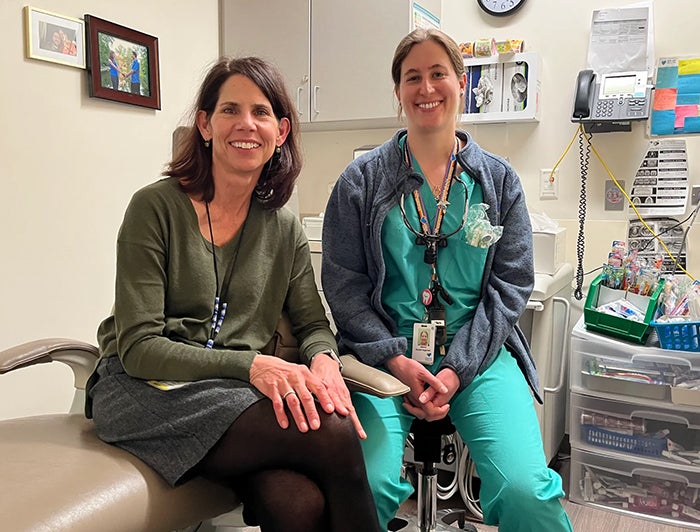Denver Health Doctors Take on Dental Duties to Reach Low-Income and Uninsured
Denver Health
Denver, Colo.

Giving a flu shot, checking for an ear infection, searching for cavities and treating teeth with fluoride varnish.
For Denver pediatrician Patricia Braun, M.D., it’s all in a day's work as an increasing number of medical practices around the country are integrating basic dental services into their patient care routines, pulling aside the traditional wall between the two disciplines.
“We’re seeing more oral disease than the general population. There is a bigger need,” Braun said of the patients she treats at Bernard F. Gipson Eastside Family Health Center, which is part of Denver Health, the largest safety-net hospital in Colorado, serving low-income, uninsured, and underinsured residents.
In Denver and many other major metropolitan areas, housing instability, language barriers, lack of transportation, and the high cost of dentistry without insurance make dental care inaccessible for many children, the migrant community, and seniors.
With federal and private funding, programs to integrate oral and medical care have expanded in the past 10 years, but they face socioeconomic barriers, workforce shortages, and the challenge of dealing with the needs of new immigrants.
Beyond assessment, education, and preventive care, primary care providers refer patients to on- or off-site dentists, or work with embedded dental hygienists as part of their practice.
The effort is making a difference. Braun’s program has applied more than 17,000 fluoride varnishes and increased the percentage of children 3 and younger who received preventive oral health care to 78% from 33% in its first 2½ years.

